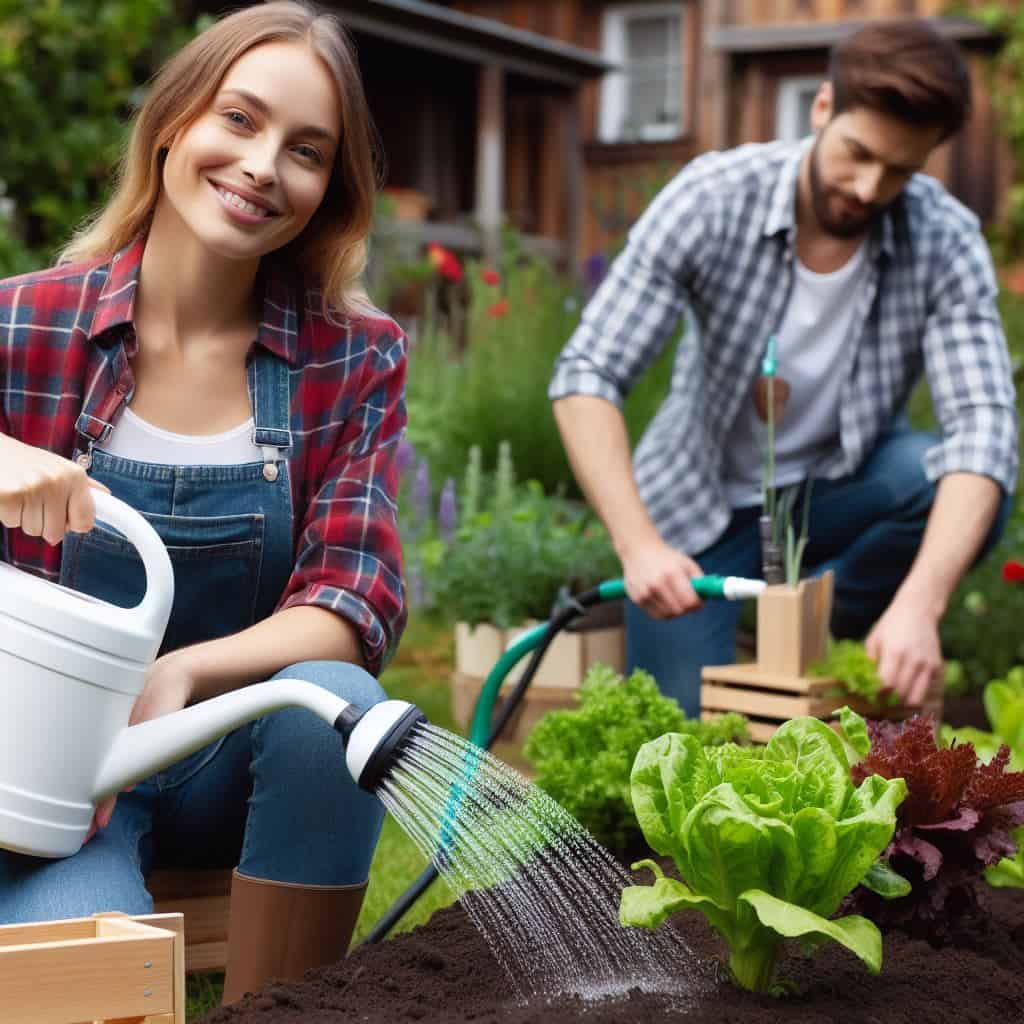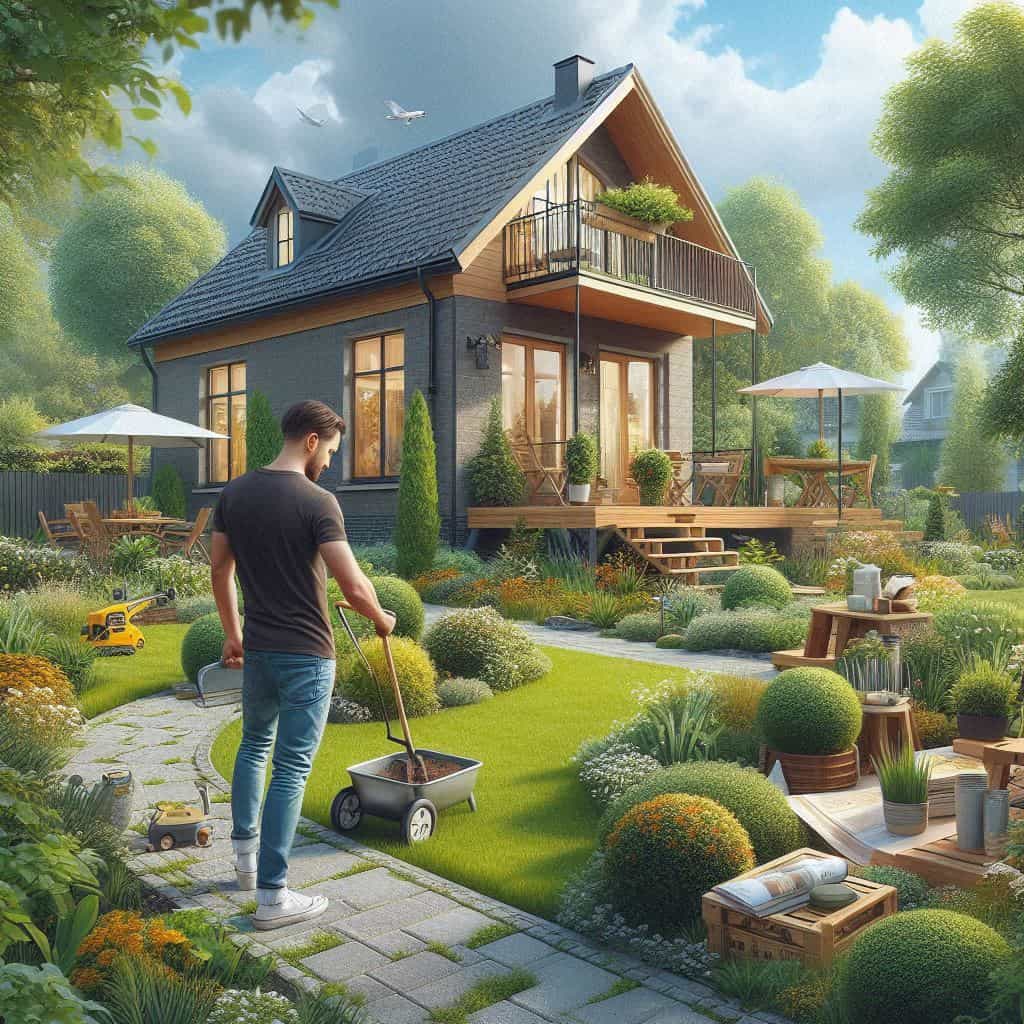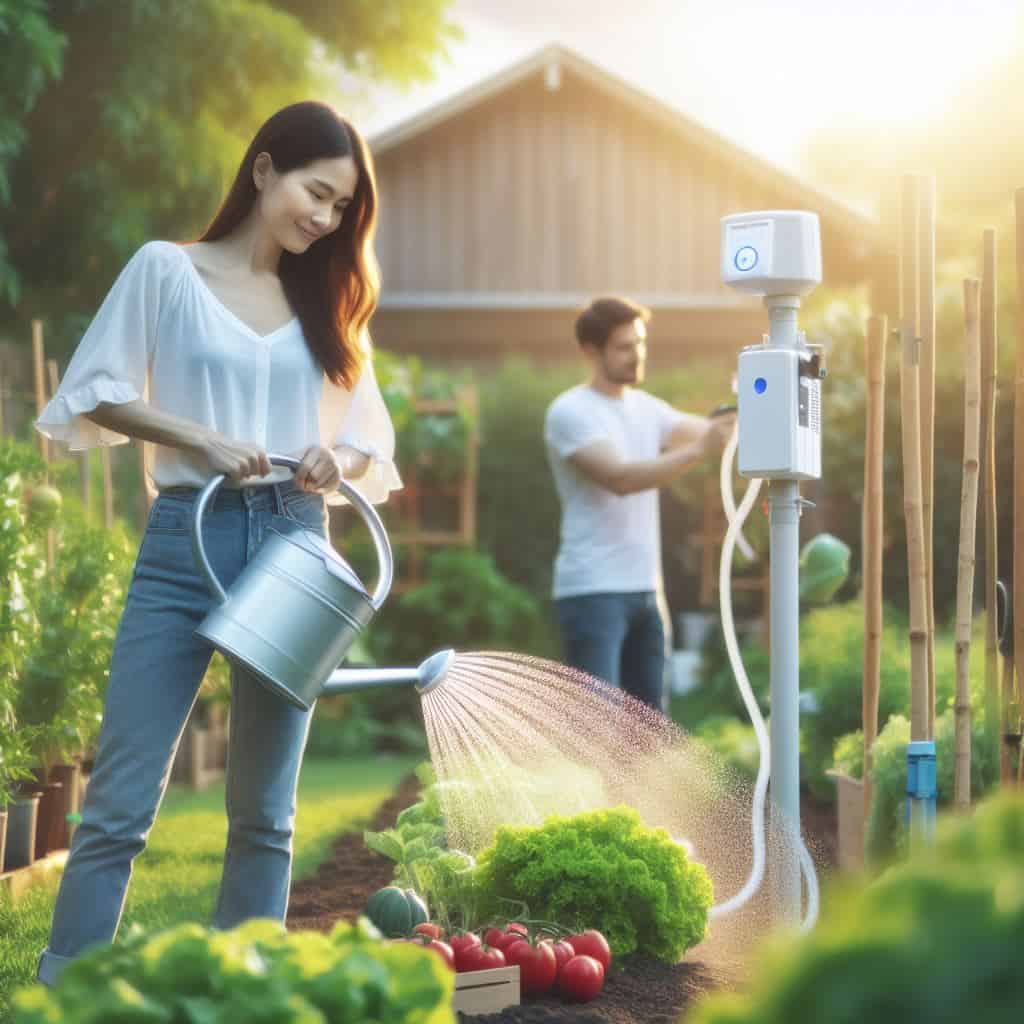Irrigation systems for gardens and orchards provide the ability to supply plants with the necessary amount of water without the constant presence of a gardener. Let's consider the main types of irrigation systems and compare their key characteristics.
Manual Irrigation
- Efficiency: low, requires regular monitoring and involvement.
- Installation complexity: low, does not require special skills or equipment.
- Cost: low, but can be costly over extended periods due to the need for constant involvement.
- Required equipment:
- Watering hose.
- Sprinkler nozzle or drip emitter.
- Nozzle with pump for water supply from a bucket or barrel.
Drip Irrigation
- Efficiency: high, provides precise and economical water use.
- Installation complexity: medium, requires installation of pipelines and drainage systems.
- Cost: medium, initial costs may be high but are offset by water and crop savings.
- Required equipment:
- Drip lines or tubing.
- Drip emitters or drip tapes.
- Water filter.
- Pressure regulator.
- Shut-off valves and connectors.
Sprinkler system
- Efficiency: high, provides uniform watering for large areas.
- Installation complexity: high, requires installation of underground pipelines and distribution systems.
- Cost: high, requires significant initial investment in equipment and installation.
- Required equipment:
- Sprinklers (stationary or rotating).
- Underground pipes and drainage system.
- Controller or timer for automatic control.
- Filter and pressure regulator.
- Shut-off valves and connectors.
Surface Irrigation
- Efficiency: medium, provides uniform water distribution over the soil surface.
- Installation complexity: low, does not require installation of special equipment.
- Cost: low, but may require more water due to evaporation and water runoff.
- Required equipment:
- Watering hose with distribution head.
- Sprinkler nozzles or rain guns.
- Stands or mounts to hold the hose.
Automatic irrigation control systems
- Efficiency: high, provides precise and automatic watering control.
- Installation complexity: medium, requires installation of sensors and control devices.
- Cost: medium, initial costs may be high but are offset by water and timesavings.
- Required equipment:
- Soil moisture sensors.
- Controller or timer for automatic control.
- Valves and main pipelines.
- Filters and pressure regulators.
- Shut-off valves and connectors.
The main difference between manual watering and surface irrigation is the method of delivering and distributing water to plants.
Manual Watering involves direct control of the water flow by the gardener. This can be done using a hose and a sprayer or simply with a bucket. The gardener controls the timing and intensity of watering, moving between plants and directing the water flow to the roots.
Surface Irrigation, on the other hand, involves the uniform distribution of water over the soil surface. This can be achieved using sprinkler nozzles, rain guns, or a drip irrigation system. Water is applied to the soil surface and then absorbed by the plant roots.
Thus, the main difference between them lies in the method of water delivery: manual watering is directed at the plants themselves, while surface irrigation is applied to the soil around them. Each method has its advantages and disadvantages, and the choice depends on the specific conditions and preferences of the gardener.
How to determine soil moisture?
You can calculate soil moisture by identifying the soil type and the specific water requirements of your plants. Generally, most plants prefer moderately moist soil, but there are deviations depending on the type of plant.
Step 1: determine the soil type on your plot. It can be sandy, clayey, or loamy soil.
Step 2: learn about the moisture needs of your plants. Some plants, such as cacti, prefer dry soil, while others, such as cucumbers, and need constant moisture.
Step 3: use a simple test to determine soil moisture. Insert a stick into the soil to a depth of about 5-10 cm and pull it out. If the soil sticks to the stick and leaves traces on it, it is likely moist enough. If the soil does not stick and appears dry, it needs watering.
Step 4: determine how much water is needed for watering. This depends on several factors, including the weather, soil type, and plant requirements. On average, potted plants usually need watering when the top layer of soil dries out, and plants in the ground need watering about once a week in dry weather.
Step 5: water plants as needed, being careful not to overdo it. Overwatering can be as harmful as underwatering.
The choice of irrigation system depends on the size of the plot, soil type, plants, and gardener's needs. It is also important to consider water availability and budget. Regardless of the choice, an irrigation system will help maintain the beauty and health of your garden, reduce maintenance costs, and increase yields.



